Did you know that up to 5% of a home’s heat can escape through an open fireplace? With energy costs going up, it’s key to seal your chimney to save money. This guide will show you how to block off your chimney, from checking its condition to picking the right materials.
Sealing your chimney can solve many problems like leaks and cold drafts. But, it’s important to know the possible downsides and do it right. Sealing wrong can cause moisture, bad smells, and safety risks. This guide will help you block your chimney safely and keep your home cozy and safe.
Key Takeaways
- Blocking off a chimney can save up to 5% of home heating costs by preventing heat loss.
- Proper chimney assessment and material selection are critical to a successful DIY project.
- Temporary and permanent solutions are available, each with their own advantages and considerations.
- Safety and legal regulations must be followed to ensure a safe and compliant home environment.
- Regular maintenance is essential to keep your chimney blocked off effectively.
Why You Should Block Off Your Chimney
Blocking an unused chimney can greatly benefit your home. It improves energy efficiency by stopping heat loss and cold air. This means lower energy bills and a cozier home all year.
It also keeps wildlife like birds, squirrels, and raccoons out. This protects your home from damage and reduces disease risks from pests.
But, it’s important to ensure your chimney has proper ventilation. Without it, moisture can damage your home. Chimney caps and covers help prevent downdrafts and keep air flowing.
- Galvanized steel chimney caps are cheaper but can rust, staining your roof.
- Stainless steel chimney caps are pricier but last longer than galvanized steel.
- Copper chimney caps are the most durable and look great, making them the top choice for longevity and style.
Sealing off an unused chimney is smart and saves money. It boosts energy efficiency, keeps pests out, and protects your home’s structure. With the right materials and ventilation, you can enjoy a sealed chimney safely and effectively.
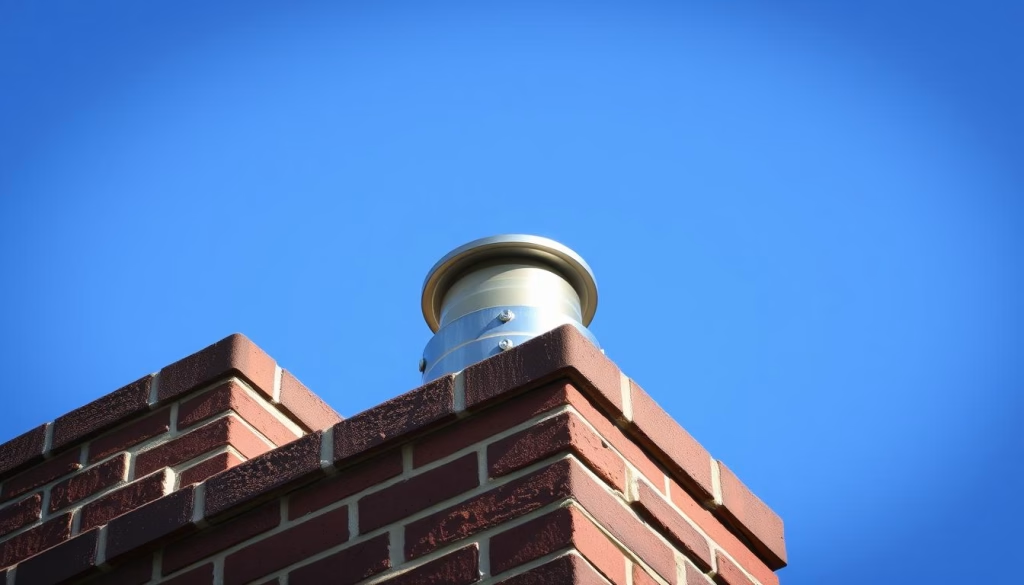
Assessing Your Chimney's Condition
Before you think about blocking your chimney, it’s key to check its state. A detailed chimney inspection can show you what you need to do next. Look at the chimney’s outside for signs like cracks, loose bricks, or bad mortar.
Creosote buildup is a big worry. It’s a flammable stuff from burning wood that can block the chimney. Check inside for too much creosote that might need cleaning.
- Common causes of a blocked chimney include animal nests, leaves, twigs, dirt, debris, creosote, and sooty buildup.
- Many older homes in Western New York have smoke chambers built with corbeled brick, leading to sharper edges that can accumulate materials.
- There is an increased risk of carbon monoxide poisoning when the chimney is blocked.
If you’re not sure about your chimney, get a pro chimney sweep to check it. They can spot problems and suggest what to do next. This could be cleaning, fixing, or figuring out how to block it.
| Potential Warning Signs of a Blocked Chimney | Immediate Action Required |
|---|---|
|
|
By checking your chimney well, you can decide the best way to fix any problems. This keeps your home safe.
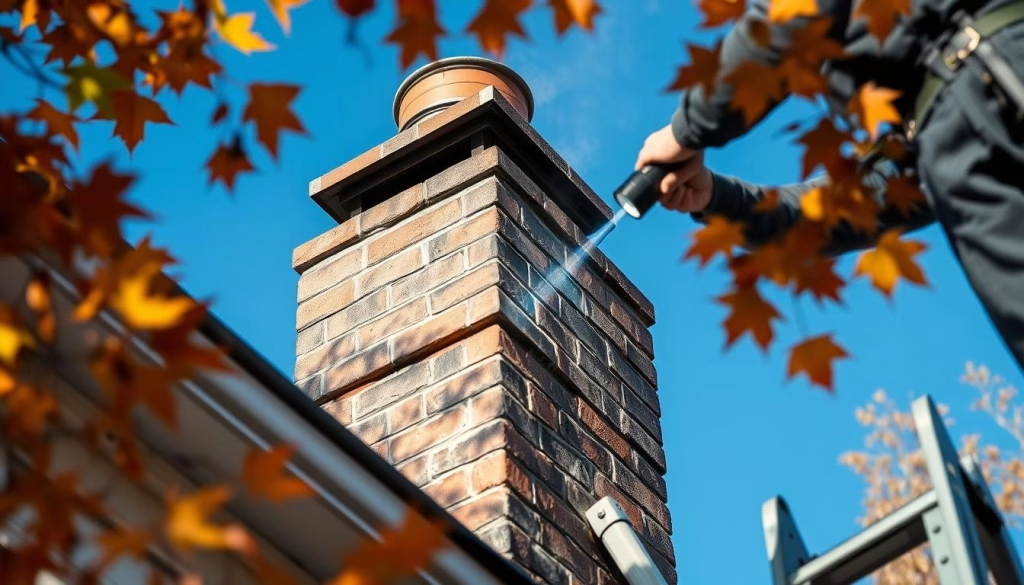
Choosing the Right Materials
There are many materials to pick from when blocking your chimney. Each has its own good and bad points. The best one for you depends on if you need something temporary or permanent for your chimney balloon, chimney blocker, or chimney damper.
For quick fixes, think about chimney balloons, inflatable flue blockers, or felted wool flue blockers. They’re easy to put up and take down. This makes them great for seasonal use or when you only need them for a little while. Chimney balloons, in particular, are a budget-friendly and effective way to seal your chimney when it’s not in use.
For a more lasting fix, look into chimney caps, register plates with vents, or professional sealing methods. Chimney caps, made from stainless steel, aluminum, or copper, offer long-term protection and cut down on drafts. Stainless steel caps come with a lifetime warranty, but galvanized steel might rust over time.
| Material | Durability | Cost | Maintenance |
|---|---|---|---|
| Copper | Highest | Highest | Low |
| Stainless Steel | High | Moderate | Low |
| Aluminum | Moderate | Low | Moderate |
Think about durability, cost, and upkeep when picking a material. Copper is the strongest and lasts the longest but is the priciest. Stainless steel is a good middle ground, while aluminum is cheaper but might bend easily.
Make sure the chimney cap or blocking solution you pick fits your chimney right. This ensures a tight seal, keeping your home safe and cozy.
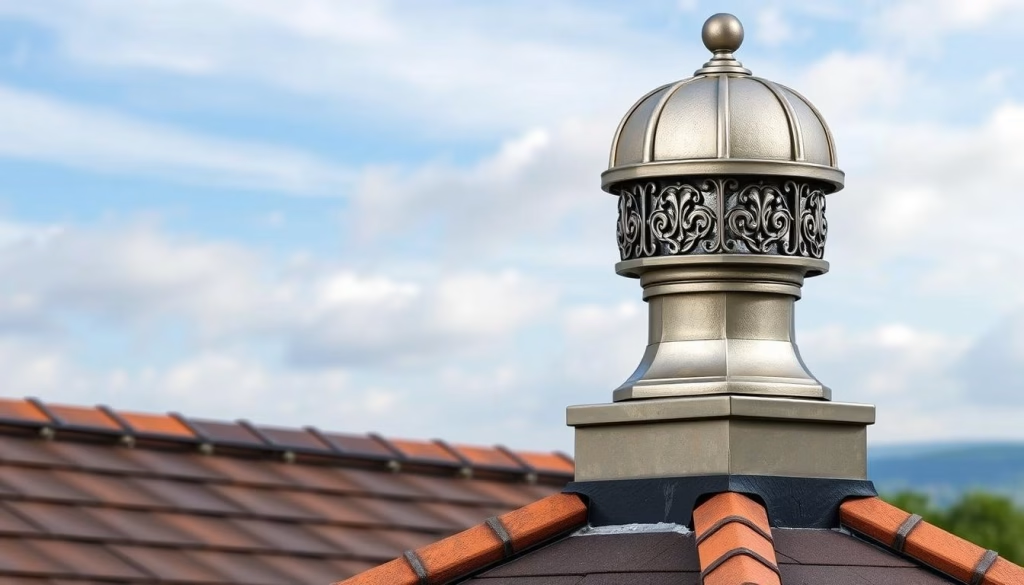
Step-by-Step DIY Process
Blocking your chimney is easy and can save energy and stop drafts. You’ll need a ladder, safety gear, a measuring tape, and your chosen material.
Using a chimney balloon or felted wool blocker is a good choice. These tools seal the chimney flue without needing to make permanent changes. Make sure to measure your chimney flue right and follow the instructions for installation.
- Gather the necessary DIY chimney blocking tools and materials, including a ladder, safety gear, and measuring tape.
- Determine the size of your chimney flue and select the appropriate chimney sealing tools, such as a chimney balloon or felted wool blocker.
- Carefully measure the dimensions of the chimney flue to ensure a snug and secure fit for your chosen blocking method.
- Safely install the chimney balloon or felted wool blocker, following the manufacturer’s guidelines to create an effective seal.
- To seal the top of the chimney, consider installing a chimney cap or chimney cover to protect against weather elements and animal intrusions.
Always put safety first when blocking your chimney. Make sure you have good ventilation, wear the right gear, and get help if you’re not sure about anything.
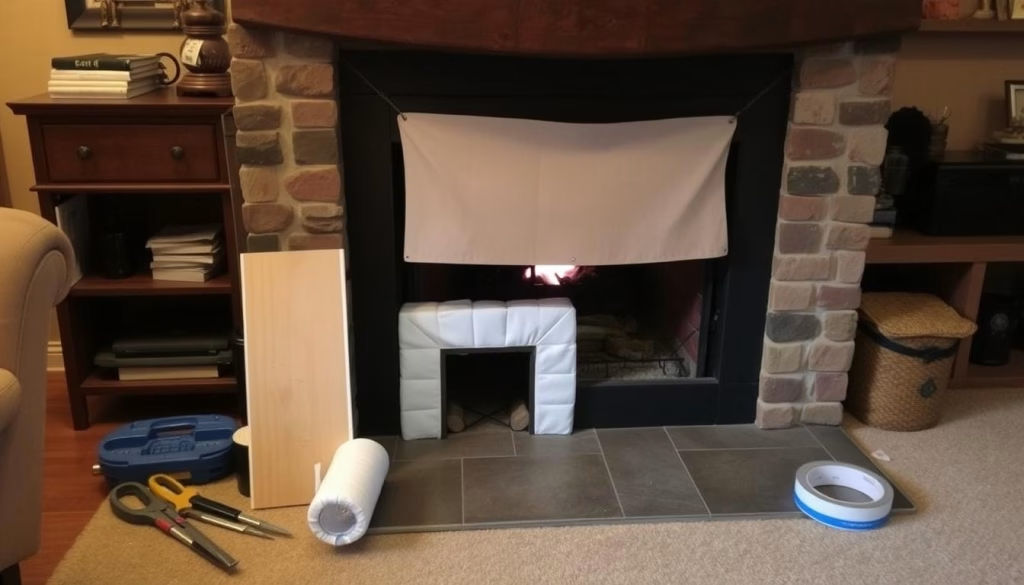
“Proper ventilation and safety measures are crucial when blocking a chimney. Consult a professional if you have any doubts about the process.”
Temporary Vs. Permanent Solutions
When deciding how to block your chimney, you have two main choices: temporary and permanent solutions. Temporary fixes, like temporary chimney block, are flexible and easy to remove. However, they might need regular upkeep. Permanent options, such as permanent chimney sealing, offer lasting protection but are pricier and harder to undo.
If you don’t plan to use your fireplace or face ongoing draft or wildlife problems, a permanent fix might be best. This could mean installing a chimney cap or hiring a pro to seal it. But, if you might use the fireplace again, a temporary solution like a chimney balloon could be a smart choice.
| Temporary Solutions | Permanent Solutions |
|---|---|
| Flexible and easy to remove | Long-term protection |
| May require periodic maintenance | More costly and difficult to reverse |
| Good option if you might use the fireplace again | Recommended if you never plan to use the fireplace or have persistent issues |
The choice between temporary and permanent solutions depends on your needs, budget, and fireplace plans. Talking to a chimney expert can guide you to the right choice for your home.
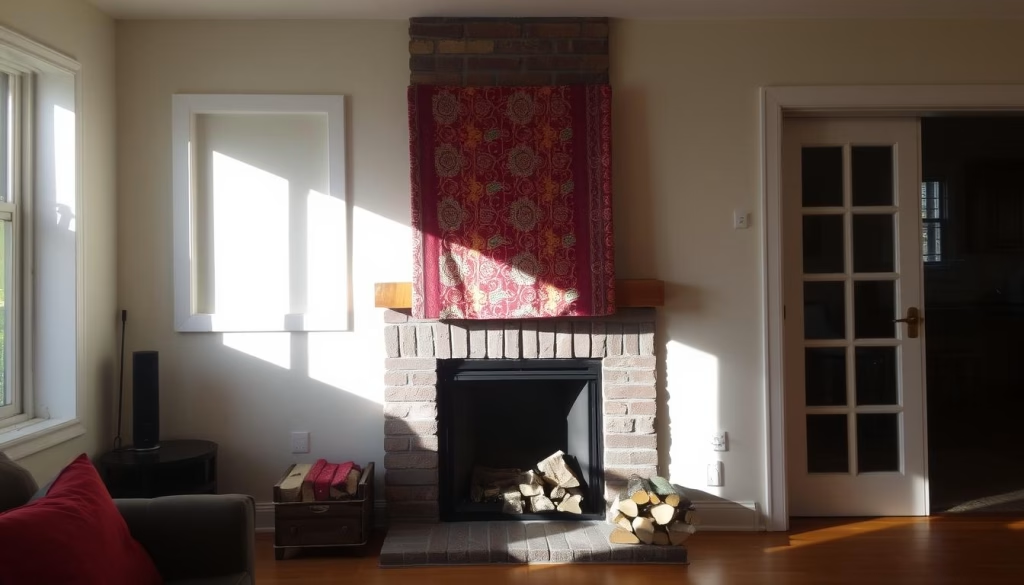
Safety Considerations When Blocking a Chimney
When blocking your chimney, safety comes first. You need the right tools and steps to do it right. It’s also key to think about ventilation to avoid risks.
In Europe, it’s the law to block unused chimneys for fire safety. Some people worry about the dangers of blocked chimneys. Experts suggest using baffles or fireproof materials to seal them, to stop dampness.
Good ventilation is important to keep moisture and pollutants out. A house renovation showed no problems with sealed chimneys. But, using chimneys for ventilation is risky, as it can lead to carbon monoxide poisoning.
When you block a chimney, make sure it doesn’t harm chimney safety or ventilation. If unsure, talk to a professional about ventilation requirements and safety.
“Half the chimney is open to the inside and half to the heat outside. Excessive heat accumulation within the fireplace and chimney can lead to melting glass doors and scorching nearby combustibles.”
Use chimney cowls or balloons to seal the chimney while keeping air flowing. Chimney covers are a good, lasting option. They fit with your house and prevent gas leaks, allowing for gas line use.
Your home and family’s safety is most important when blocking a chimney. Be careful, seek advice if needed, and make sure it doesn’t harm your home’s safety and air flow.
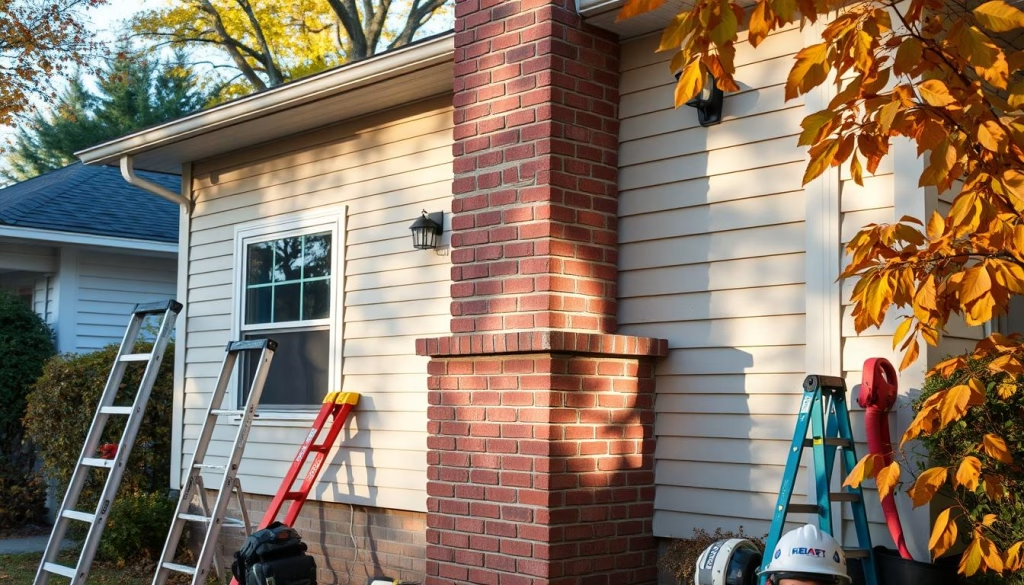
Legal Regulations and Considerations
It’s important to know about local building codes when blocking your chimney. You might need permits or a certified professional for some installations. This is especially true for permanent solutions or complex setups.
Homeowners should learn about chimney regulations in their area. This ensures they follow the rules. Getting a professional chimney service can help a lot. They can make sure the installation is safe, effective, and follows the law.
| Chimney Liner Type | Guarantee |
|---|---|
| Entry point stainless steel flue liner | 10 year guarantee |
| More expensive stainless steel liner | 20 year guarantee |
| Isokern pumice liners | 10 year guarantee |
| Furanflex flue liners | 20 year insurance backed guarantee |
Chimney sweeping needs vary based on fuel type:
- Smokeless fuel: At least once a year
- Wood: Quarterly when in use
- Bituminous coal: Quarterly when in use
- Oil: Once a year
- Gas: Once a year
Following local chimney regulations ensures a safe and legal chimney blockage. This makes your home cozy and secure.
Maintenance After Blocking Your Chimney
Keeping your blocked chimney in good shape is key for safety and efficiency. Regular checks and small tweaks can help keep your home safe. This prevents any future problems.
It’s smart to check the blocking device or material often, at least once a year. Look for moisture, mold, or odd smells. These could mean there’s a bigger issue. For things like chimney balloons, make sure they’re working right by adjusting them as needed.
- Inspect the blocking device or material annually to ensure it remains secure and effective.
- Check for signs of moisture, mold, or unusual odors that could indicate underlying issues.
- Reinflate or adjust temporary blocking devices like chimney balloons as needed.
Also, getting a yearly chimney maintenance check from a pro is a good idea. They can look at the block and the chimney itself. They’ll spot any big problems or repairs needed early on.
| Maintenance Task | Frequency | Importance |
|---|---|---|
| Chimney maintenance inspection | Annually | Essential to catch any issues early and ensure the blocking solution remains effective. |
| Blocked chimney inspection | Periodic (at least once a year) | Helps identify any signs of wear, moisture, or other problems that may require attention. |
| Adjusting temporary blocking devices | As needed | Maintains the seal and effectiveness of temporary solutions like chimney balloons. |
By being proactive and doing regular upkeep, your blocked chimney will keep your home safe and secure.
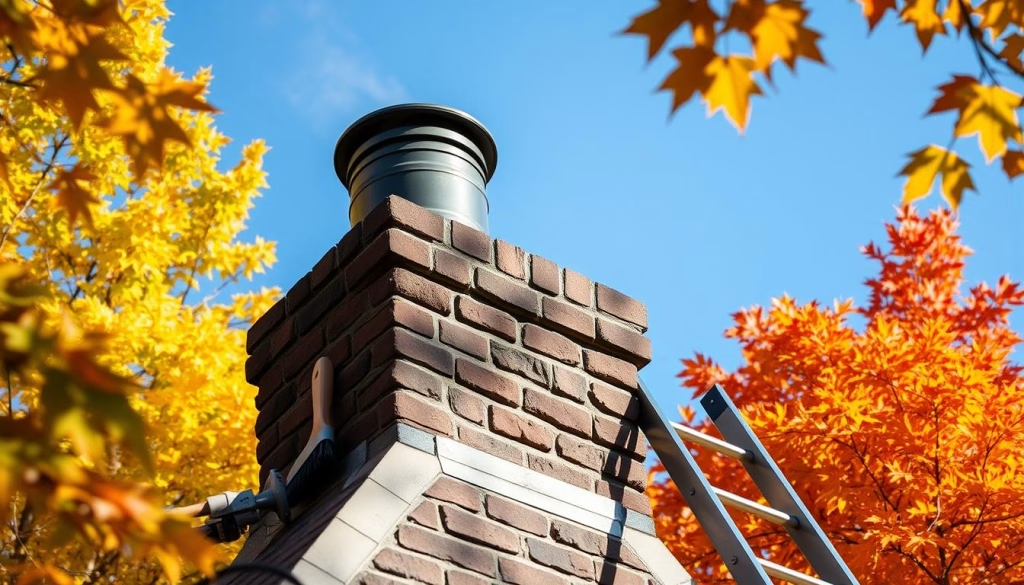
Troubleshooting Common Issues
Homeowners often face challenges with blocked chimneys. One big issue is chimney moisture issues. It’s important to have good ventilation to stop too much moisture. A chimney dehumidifier can also help a lot.
Another problem is smoke backdraft. If smoke goes back into the room, check the blocking device first. Make sure it’s the right size for your chimney. Sometimes, you need to change the blocking method or get help from a pro.
- Ensure proper ventilation to address moisture problems
- Consider using a chimney dehumidifier to control humidity
- Verify that the blocking device is properly installed and sized
- Adjust the blocking method or consult a professional if smoke backdrafts persist
Regular maintenance and professional checks can help a lot. By tackling moisture and smoke backdrafts early, you can have a warm and safe fireplace all year.
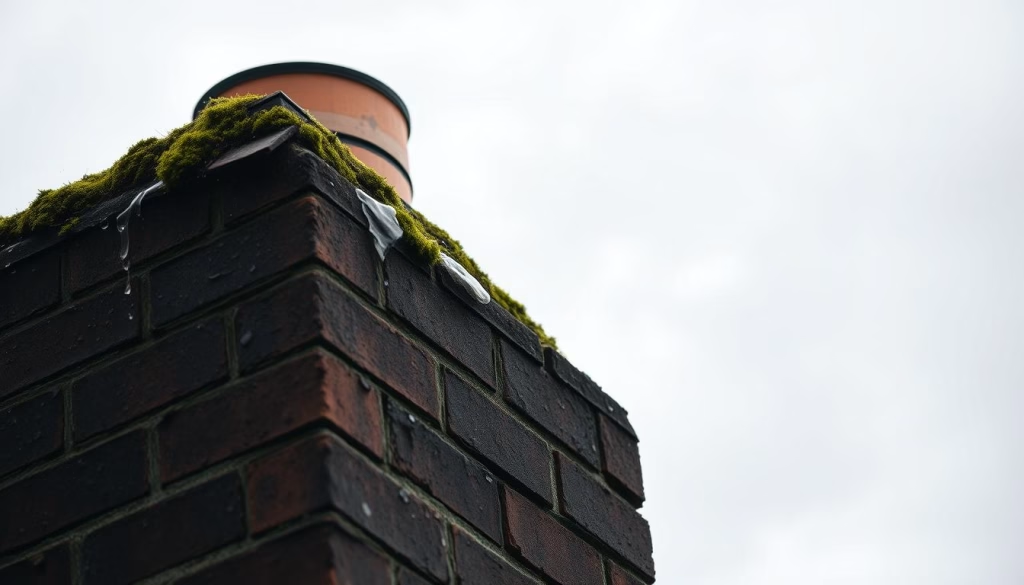
Conclusion: Enjoy a Cozy and Secure Home
Blocking your chimney can make your home more comfortable and energy-efficient. First, check your chimney’s condition. Then, choose the right materials and focus on safety. This way, you can stop drafts and improve your home’s warmth.
Keeping your chimney in good shape is key. If you’re not sure about anything, talk to experts. They can make sure your home stays warm, safe, and energy-smart for a long time.
Proper chimney blocking does more than just stop drafts. It also stops moisture, controls embers, and saves heat. By doing this, you make your home cozy and safe. Plus, you might even save on energy costs.
FAQ
What are the benefits of blocking off a chimney?
Blocking off a chimney can make your home more energy efficient. It stops heat from escaping and cold air from getting in. It also keeps wildlife out and reduces debris.
What materials can be used to block off a chimney?
There are many materials for blocking a chimney, depending on what you need. For temporary fixes, try chimney balloons, inflatable flue blockers, or felted wool. For a permanent solution, consider chimney caps, register plates, or professional sealing.
What safety considerations should I keep in mind when blocking a chimney?
When blocking a chimney, safety is key. Use the right tools and be careful when climbing. Make sure there’s good air flow to avoid moisture and carbon monoxide. Never block a chimney completely without a pro’s help, as it can be dangerous.
Do I need to follow any legal regulations when blocking my chimney?
Know the local laws about changing your chimney. Some places need permits or a pro for certain blocks. A certified chimney expert can help you follow the rules and install it right, especially for permanent blocks.
What kind of maintenance is required after blocking my chimney?
Even after blocking, your chimney needs regular checks. Look at the block to make sure it’s still working well. Watch for moisture, mold, or strange smells. For balloon blocks, check and adjust them as needed. Do yearly checks to find problems early.
Source Links
- How to stop your Draughty Chimney and Block Chimney Draughts | Hiatt Hardware
- closing off an unused fireplace-how
- What To Do With An Unused Chimney? | Chim Chimney
- Why You Must Cap an Unused Chimney | Black Goose Chimney
- How to Block a Chimney
- What To Do If Your Chimney Is Blocked?
- Common Signs of Chimney Masonry Damage and How to Spot Them
- How To Diagnose Blocked Chimney Flue
- 8 Mistakes to Avoid During Chimney Caps Installation | Ace Gutter Inc
- How to Choose the Right Chimney Cap for Your Home – ALL PRO CHIMNEY SERVICE
- Blocking off inside a Chimney – ideas
- Thinking of blocking your chimney? Think about the Do’s and Don’t Do’s first
- How to Close off a Fireplace to Prevent Heat Loss
- How to Block a Chimney That is Not in Use | SHL Distributors
- Blocking up chimney?
- All Of Your Chimney FAQs Answered
- Fireplace & Chimney Codes
- How to Know If My Chimney Is Blocked and How to Fix It!
- How to Clear a Clogged Chimney
- 6 Common Chimney Issues And How To Fix Them Forever
- The Most Common Chimney Problems & Their Solutions
- 4 Common Chimney Problems and How to Easily Prevent Them | Southern Chimneys
- How to Keep Your Home Fireplace Cozy and Safe
- What Every Homeowner Needs to Know About Chimney Capping – My Trusted Expert






